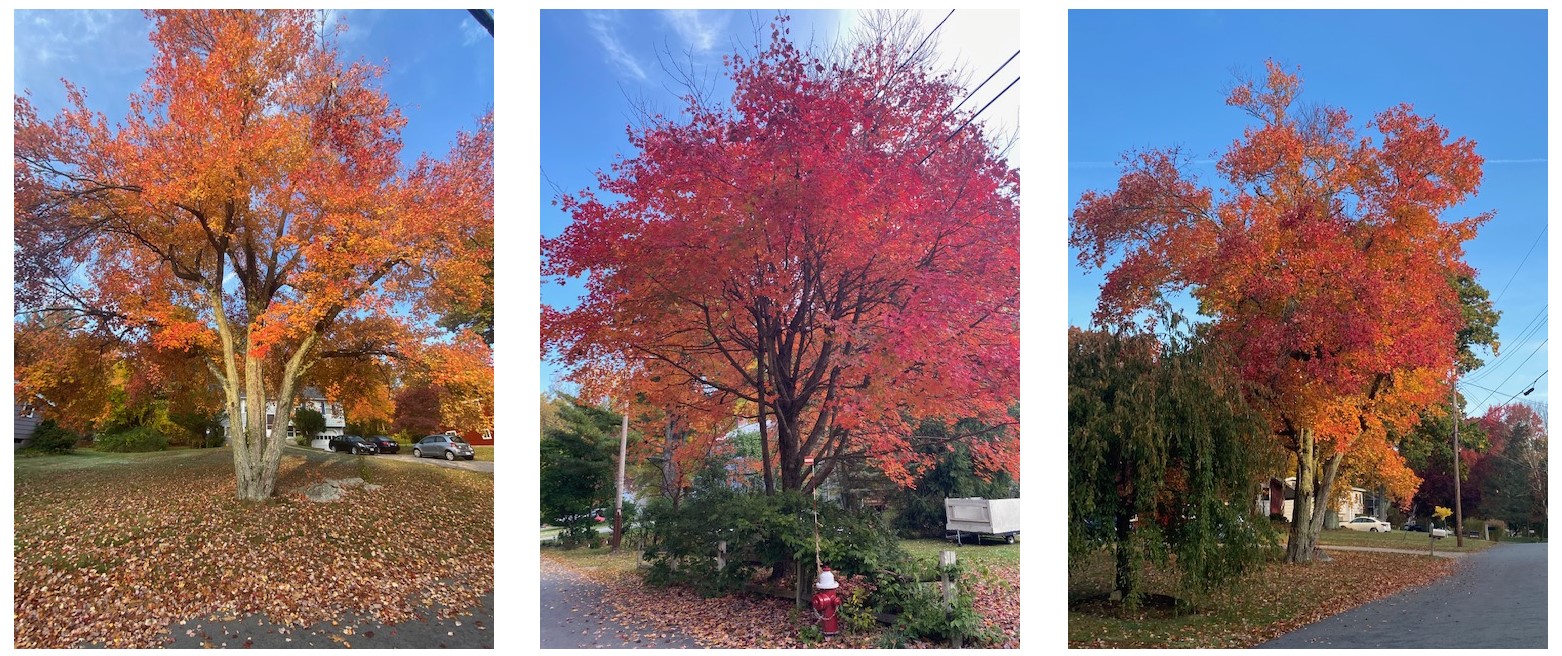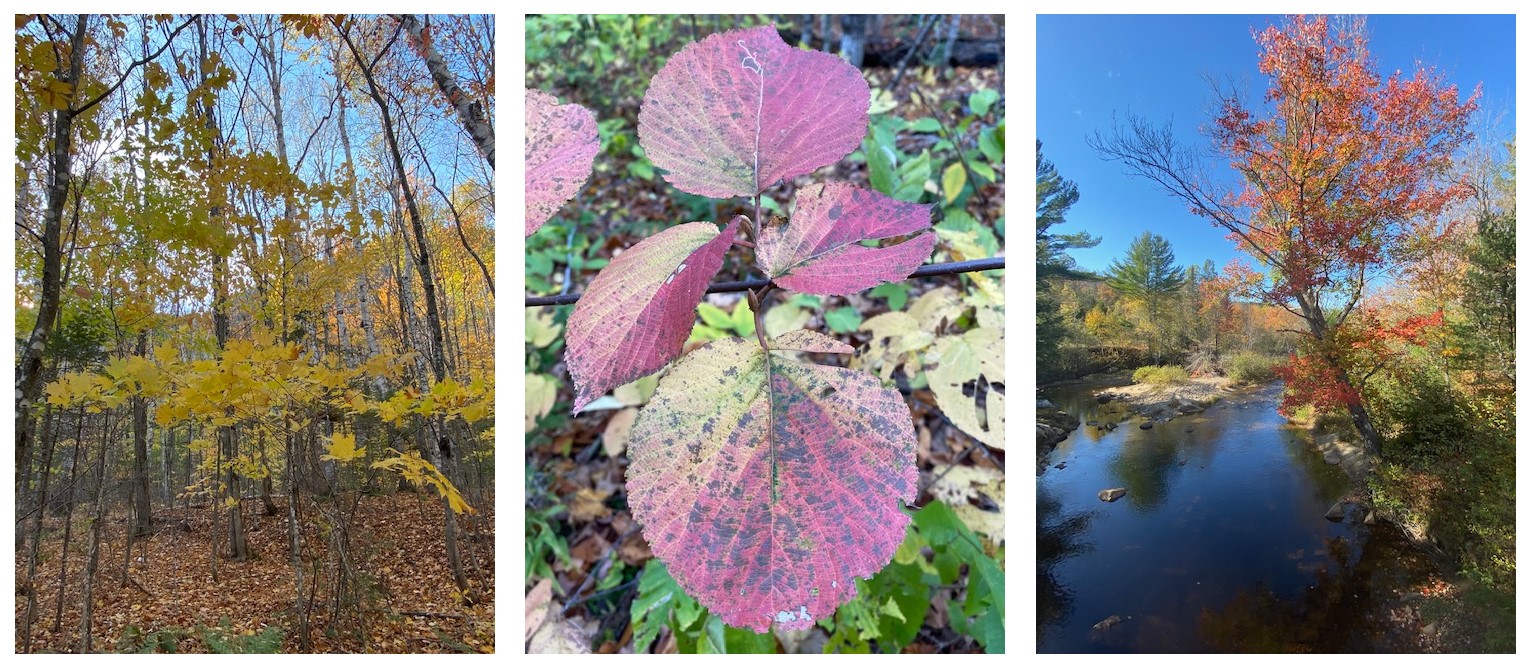Autumn Thoughts
First published in Sanctuary Asia,
Vol. 40
No. 11,
November 2020
by Lakshmy Raman
"For anyone who lives in the oak-and-maple area of New England, there is a perennial temptation to plunge into a purple sea of adjectives about October." – Hal Borland.
As I stand under a sugar maple tree, admiring its scarlet leaves, my 80-year-old neighbor offers her wisdom, “It’s more vibrant than usual, possibly due to the drought we are having in Massachusetts.”
Each year, I think there can be no season as lovely as autumn. A new canvass is unearthed and the landscape is painted in hues of brilliant red, orange, purple, gold and yellow. In Northeast USA, from end September to October, the dogwoods, oaks and maples don crimson tones while the hickory, birch, elms and poplars adorn themselves in gold. Meanwhile in the Rocky Mountains of western USA, the autumnal colours are the result of aspens that turn a shimmering yellow.
It’s no wonder a whole season of the year is named for the fall of leaves. What happens just before the leaves fall seems almost magical but can be explained by science. Warm, shorter days and crisp, cool nights provide the ideal conditions for leaf senescence. This is the final stage of leaf development and requires nutrient relocation from the leaves to reproducing seeds. This involves breaking down complex molecules into soluble ones such as sugars and amino acids, which are reabsorbed to recover the energy lost when the tree sheds its leaves. To reabsorb the soluble compounds, chlorophyll has to produce the required energy but given the fading sunlight and degrading chlorophyll, other tree pigments must take charge. This also helps to keep away pests that seek to exploit the leaves that are now vulnerable to UV exposure. During this period an abscission layer is formed between the base of the leafstalk and the tree to stop the flow of nutrients. Once this layer is formed, the nutrient-depleted leaf is ready to fall off the tree.

Brilliant fall colours paint the woods in Hollison, Massachusetts, USA. Photo courtesy: Lakshmy Raman
Carotenoids and xanthophylls present in the leaf get to display their role. Though they work with chlorophyll to absorb sunlight and convert it to chemical energy, they are overshadowed by the prominent green pigments. In autumn, with chlorophyll on the decline, carotenoids and xanthophylls, responsible for the orange and yellow colours, continue to process energy. Similarly, tannins, seen in beech and oak leaves, and responsible for the copper and brown tones, too become visible once chlorophyll is not the focus of all attention. And what about the gorgeous shades of crimson and purple. As plant sugars accumulate in the leaves due to the abscission layer that cuts off movement, it leads to the formation of anthocyanin, responsible for these colours. Greater the accumulation of sugar, greater the anthocyanins and redder the leaves.
This year, scientists suggest that the colours have erupted earlier than normal and attribute it to less rainfall. Physiological stress caused by drought not only enhances colour but also impacts duration. The leaves die and fall off earlier. If the drought is prolonged, there could be even more damage in terms of root loss, stunted growth and pest attacks.
While drought may have brightened up the foliage, there are other climate-change repercussions that could mute fall colours in the coming decade. Changes in two main environmental factors – daylength and temperature – impact foliage colour. Higher temperatures and prolonged heat can cause stress and result in trees missing the cue and delaying the arrival of autumn or leading to the loss of leaves earlier than usual. Altered amounts and timing of precipitation and humidity changes also impact fall colour. Another key worry, say scientists, is the high levels of nitrogen that seep from fertilizer run offs. For example, with lower levels of nitrogen and nutrients, the sugar maple stores more sugars in its leaves, which triggers anthocyanin production. So more the nitrogen, trees are less stressed, leading to less reds too.

Changes in daylength and temperatures impact fall colours, says the author. Photo courtesy: Lakshmy Raman
Other landscape changes involving tree distribution is also cause for concern. As temperatures rise, to escape the heat, trees will migrate north, which means greater survival of seeds that are deposited in the north. This will impact the composition of forests, and fall foliage colours. According to the US Forest Service, 70 per cent of tree species in northeastern USA are already on a northward march.
Leaf colour changes have moved back by an average of about five days over the last two decades. Se-Jong Jeong, of NASA's Jet Propulsion Laboratory in California, suggests that if we continue with our current carbon emission levels, temperatures may reach 5.6°C above pre-industrial levels and this could delay autumnal leaf colour changes by almost three weeks.
Climate change is already changing autumn as we know it. If we continue to ignore the signs, we may just have to comfort our souls with Frost and say, “Nothing gold can stay.”
Lakshmy Raman has been heading the Sanctuary Asia editorial team for over a decade. Aside from the monthly magazine, she has also worked on coffee table books compiled and published by the Sanctuary Nature Foundation, like the Inheritance and Wild series.



